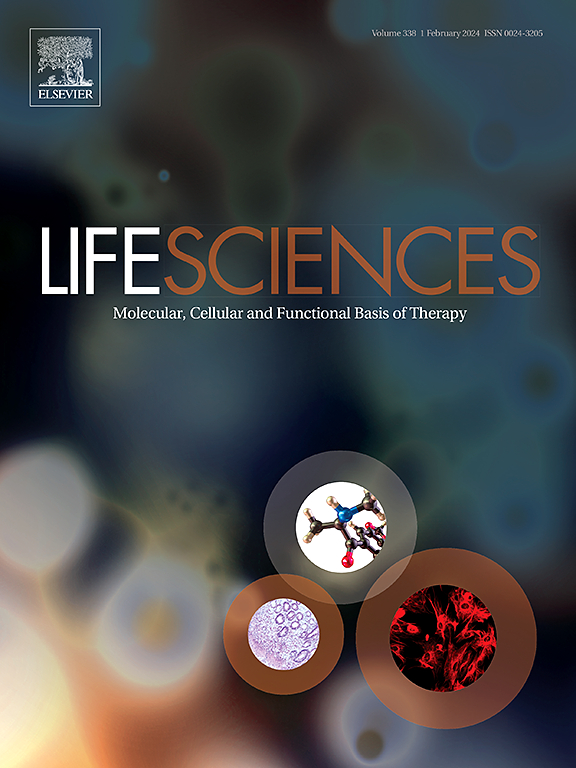保存液通过抑制毛球凋亡来保护离体头发微移植物。
IF 5.2
2区 医学
Q1 MEDICINE, RESEARCH & EXPERIMENTAL
引用次数: 0
摘要
目的:比较组氨酸-色氨酸-酮戊二酸(HTK)溶液与林格氏(RS)溶液保存离体毛囊(HFs)的效果,重点研究结构完整性、细胞活力、细胞凋亡预防以及保存期间细胞死亡的机制。材料和方法:分离的人hf在HTK或RS溶液中保存2至12 h。采用H&E染色和透射电镜观察形态学变化。通过Ki-67/TUNEL染色、活/死细胞染色和免疫荧光检测细胞活力、增殖和凋亡情况。采用实时荧光定量PCR和Western blot检测凋亡相关基因的表达,采用qPCR阵列分析确定HF细胞凋亡的通路。主要发现:HTK溶液比RS更有效地保存了HFs的结构,维持了胶原组织,防止细胞间水肿,维持了细胞膜的完整性。与RS相比,HTK溶液保存的HFs具有更高的活力和增殖率,细胞凋亡率明显降低。基因表达谱分析表明,HTK组抑制了与RS保存的HFs细胞凋亡相关的TNF信号通路的激活和线粒体功能障碍。意义:本研究表明,HTK溶液比RS溶液更有效地保存HF,特别是在大规模毛发移植所需的延长储存环境中。通过抑制细胞凋亡途径和保持细胞完整性,HTK溶液可以提高头发移植手术的成功率和结果,为优化微移植物保存和减少离体HFs的缺血缺氧损伤提供见解。本文章由计算机程序翻译,如有差异,请以英文原文为准。

Preservation solution protects isolated hair micrografts by inhibiting apoptosis of hair bulb
Aims
To investigate the effectiveness of histidine-tryptophan-ketoglutarate (HTK) solution compared to Ringer's (RS) solution for preserving isolated hair follicles (HFs), focusing on structural integrity, cell viability, apoptosis prevention, and identifying the mechanisms of cell death during the preservation period.
Materials and methods
Isolated human HFs were preserved in HTK or RS solution for periods ranging from 2 to 12 h. Morphological changes were assessed using H&E staining and transmission electron microscopy (TEM). Cell viability, proliferation, and apoptosis were evaluated through Ki-67/TUNEL staining, live/dead cell staining, and immunofluorescence. Quantitative real-time PCR and Western blot analysis were conducted to examine apoptosis-related gene expression, and qPCR array analyses were performed to determine the pathways involved in HF apoptosis.
Key findings
HTK solution preserved the structure of HFs more effectively than RS, maintaining collagen organization, preventing intercellular edema, and sustaining cell membrane integrity. HFs preserved in HTK solution exhibited significantly higher viability and proliferation rates, with a reduced rate of apoptosis compared to RS. Gene expression profiling indicated that HTK group inhibited the activation of the TNF signaling pathway and mitochondrial dysfunction, which were associated with apoptosis in RS-preserved HFs.
Significance
This study demonstrates that HTK solution is more effective than RS solution for HF preservation, particularly in extended storage settings required for large-scale hair transplantation. By inhibiting apoptosis pathways and preserving cellular integrity, HTK solution may enhance the success and outcomes of hair transplant procedures, providing insights into optimizing micrograft preservation and reducing ischemia-hypoxia injury in isolated HFs.
求助全文
通过发布文献求助,成功后即可免费获取论文全文。
去求助
来源期刊

Life sciences
医学-药学
CiteScore
12.20
自引率
1.60%
发文量
841
审稿时长
6 months
期刊介绍:
Life Sciences is an international journal publishing articles that emphasize the molecular, cellular, and functional basis of therapy. The journal emphasizes the understanding of mechanism that is relevant to all aspects of human disease and translation to patients. All articles are rigorously reviewed.
The Journal favors publication of full-length papers where modern scientific technologies are used to explain molecular, cellular and physiological mechanisms. Articles that merely report observations are rarely accepted. Recommendations from the Declaration of Helsinki or NIH guidelines for care and use of laboratory animals must be adhered to. Articles should be written at a level accessible to readers who are non-specialists in the topic of the article themselves, but who are interested in the research. The Journal welcomes reviews on topics of wide interest to investigators in the life sciences. We particularly encourage submission of brief, focused reviews containing high-quality artwork and require the use of mechanistic summary diagrams.
 求助内容:
求助内容: 应助结果提醒方式:
应助结果提醒方式:


